The perennial crop offering a maize alternative for biogas
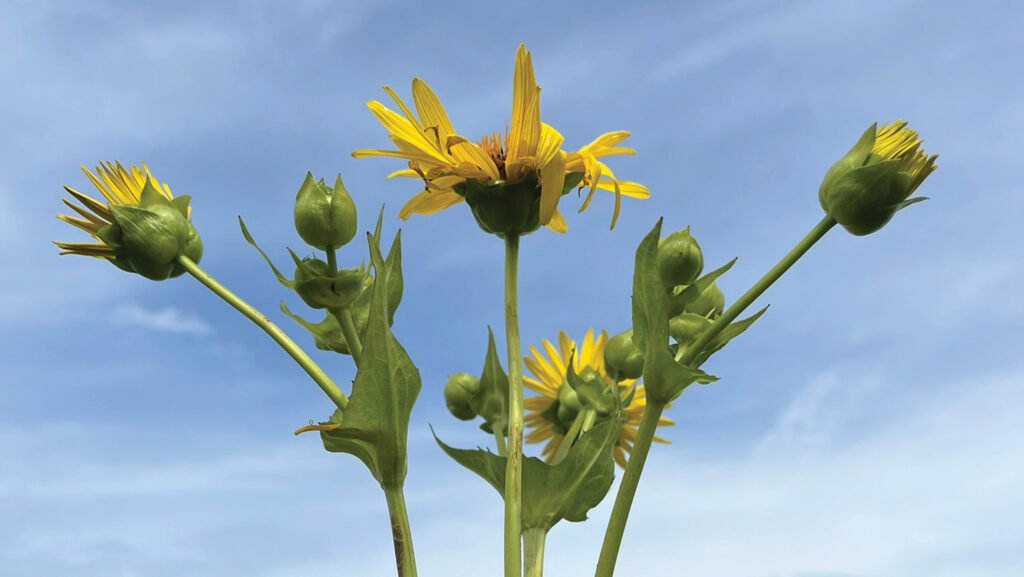 © Paul Sheardown
© Paul Sheardown Maize is wonderful crop to grow for biogas. But imagine an alternative that is cheaper to grow, is a perennial (so doesn’t need drilling each spring) and provides valuable food and habitat for wildlife.
It’s these benefits that have attracted a growing number of European farmers to grow silphium, and it’s now appearing in several Lincolnshire fields.
Farmer Paul Sheardown has a 165kW anaerobic digestion (AD) plant at Grange Farm near Grantham which needs to be fed 10t of maize silage a day.
However, this year, he is supplementing it with silage produced from 30ha of the novel crop Silphium Perfoliatum – or more commonly called the cup plant.
See also: Farm trial shows slurry additive boosts digestate N value
Paul runs a simple rotation of winter wheat and maize with roughly 160ha of each. The maize supplies his digester and the surplus is sold to another AD plant just to the north of Grantham.
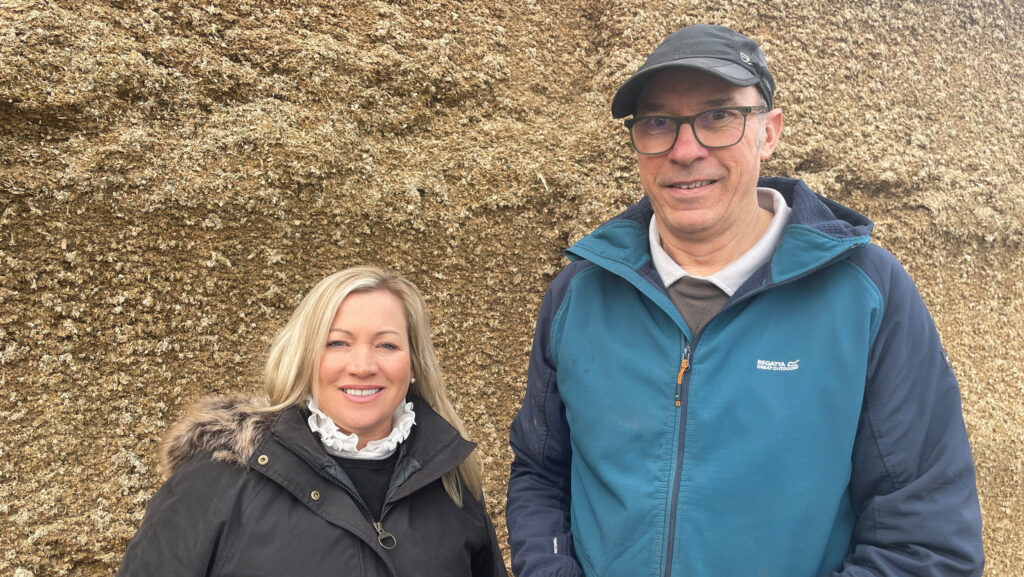
Fiona Beale and Paul Sheardown © MAG/Richard Allison
Maize growing
Over the years, Paul has developed a more sustainable approach to growing maize through the use of cover crops and reduced cultivations.
After cutting wheat, he strip-tills the ground once he has established a cover crop of black oats and vetch. Then, in the following spring, he direct-drills maize with a precision drill into the cultivated strips.
He opts for early maturing varieties of maize to enable him to harvest earlier, giving more time to drill wheat in the autumn with a Claydon drill.
Sometimes Paul has to subsoil wheelings resulting from harvest before drilling the wheat. But by strip-tilling the maize, the ground takes trailers better than if ploughed.
What is Silphium?
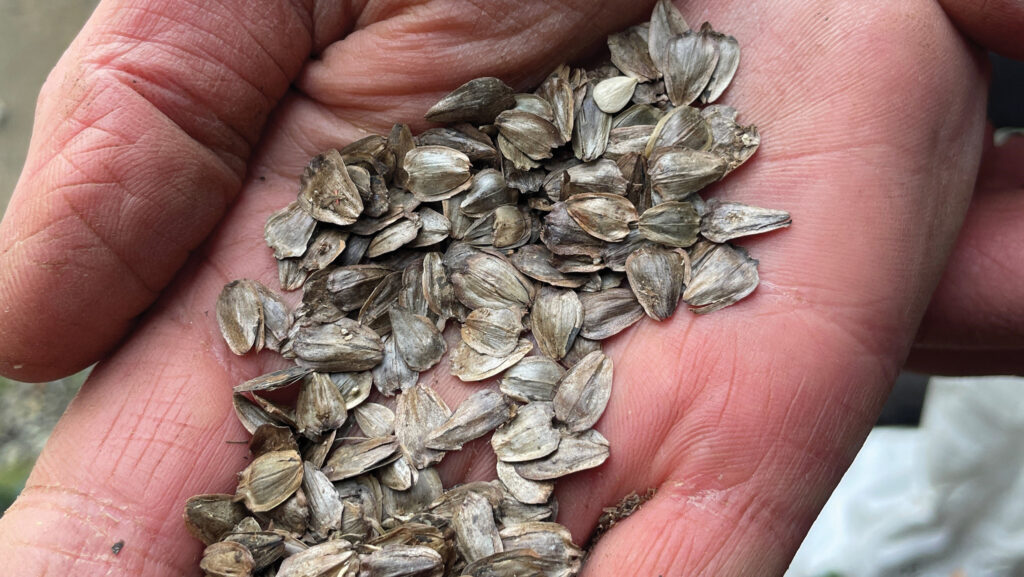
© MAG/Richard Allison
Silphium Perfoliatum is more commonly known as the cup plant. It is a flowering plant in the Asteraceae family, which is native to eastern and central North America.
It is an erect herbaceous perennial with triangular-toothed leaves, and daisy-like yellow composite flowers in summer.
In Germany, the arable cultivation of the plant is becoming increasingly widespread for biogas production, being a low-input alternative to maize.
It also offers benefits to wildlife. The flowers make it an attractive plant for many pollinators, providing pollen and nectar, and the “cups” of water formed up the stems are attractive to insects and birds as a water source.
Looking for an alternative
However, being on heavy land means achieving good seed-beds for maize and the following crop can sometimes be an issue, especially with the more unpredictable weather.
This is why he started looking at a perennial alternative, especially for the most challenging fields.
Silphium is a perennial crop that lasts for more than 15 years, and not having to cultivate and reseed fields over that period looked attractive.
Paul also says the environmental image of maize is not good, as it requires lots of cultivations, has limited value to wildlife and there is the risk of mud on roads during harvest.
Silphium can address this, as being a perennial, it isn’t reseeded every year, eliminating the associated cultivations, emissions and cost.
The sequestered carbon stays in the roots and trailers can travel better at harvest, resulting in very little mud on roads.
The crop is covered in flowers from July into September when most crops have finished, providing pollen and nectar to insects.
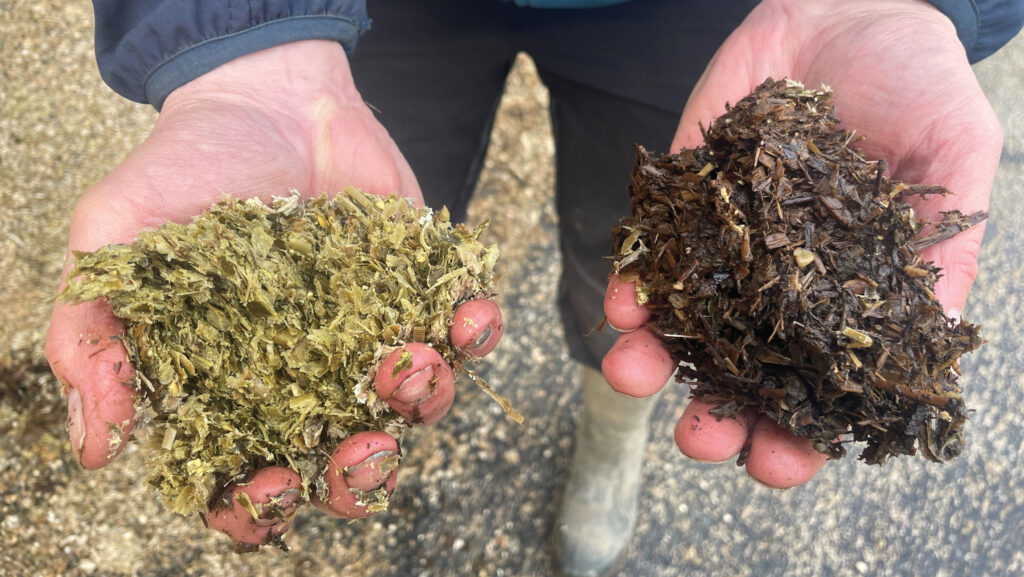
© MAG/Richard Allison
Establishing the crop
So Paul set out to establish the crop in three fields which have historically been challenging to drill maize.
That’s because the crop is tolerant to flooding, so will grow in areas where it’s a struggle to produce good seed-beds.
The silphium was drilled in September using a Claydon drill and in the first year, there was no crop to harvest. “It grew vegetatively and only got knee high, so I topped it.”
In the second year, it grew upwards, and he got his first crop, which is just starting to be used.
He subsequently found there was a better way to establish the crop according to the German growers.
Their advice is to use maize as a nurse crop, sowing it between the rows. Maize is drilled at half the normal rate and the silphium sits in the bottom. In the second year it will produce a crop.
It means farmers still get a reasonable crop of maize in the first year.
Paul points out that it needs to be drilled into a very good seed-bed and the flat seeds need to be shallow – about 5-10mm deep.
Achieving a good seed-bed is important as the seed is expensive, at £500/kg, which equates to £2,000/ha.
“I would only drill it if I managed to produce a good seed-bed,” he says.
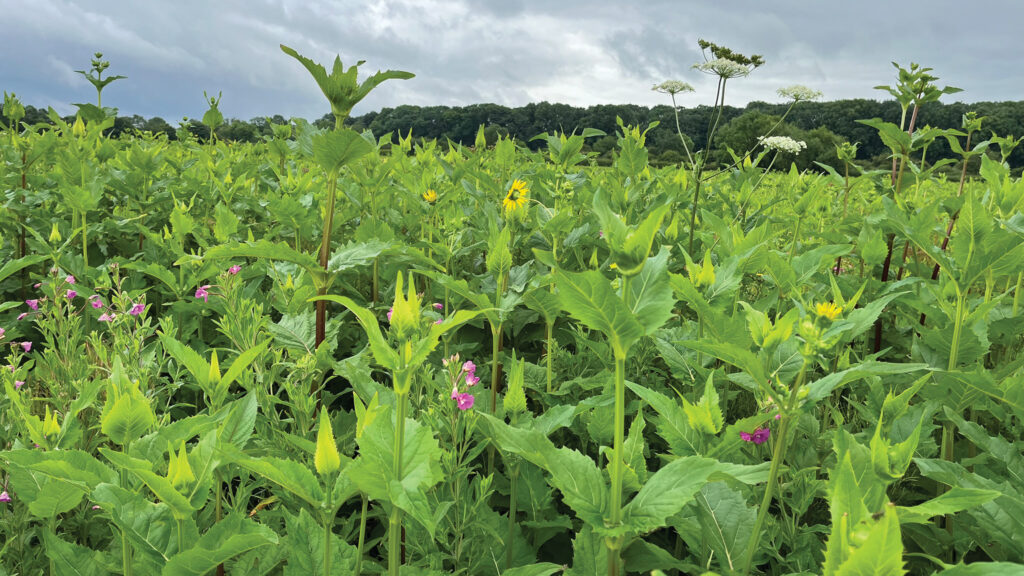
© MAG/Richard Allison
Nutrition and weed control
In the first year, it only received digestate. “The Germans say if you want to push it for yield, you can apply up to 150kg/ha of N fertiliser.”
Paul is planning to apply a total of 120kg/ha, as he wants to keep the crop standing so it is easier to harvest. He is, therefore, aiming to apply 30-60 kg/ha N (plus P and K) from digestate-topped-up nitrogen fertiliser.
Some weed control is needed in the first year after establishment, as weeds can creep in from the field edges. Once it covers the ground, it will smother weeds.
That’s it for inputs, as the crop doesn’t need any insecticides or fungicides. This and eliminating the need for redrilling makes it a cheaper and more environmentally friendly crop to grow.
Harvest
“The crop is cut as you would do with maize, and it’s ready about 10 days before maize in early to mid-September.”
He warns that the crop stores energy in the stem as starch and if left too late, this energy leaves the stem and goes down into the roots. This will, therefore, reduce the amount of methane produced.
Silphium is harvested with the same equipment as maize and Paul ensiled it in the same pit as the maize. He produced about 700t from the 30ha which he knows was down to the previous limited advice and use of N.
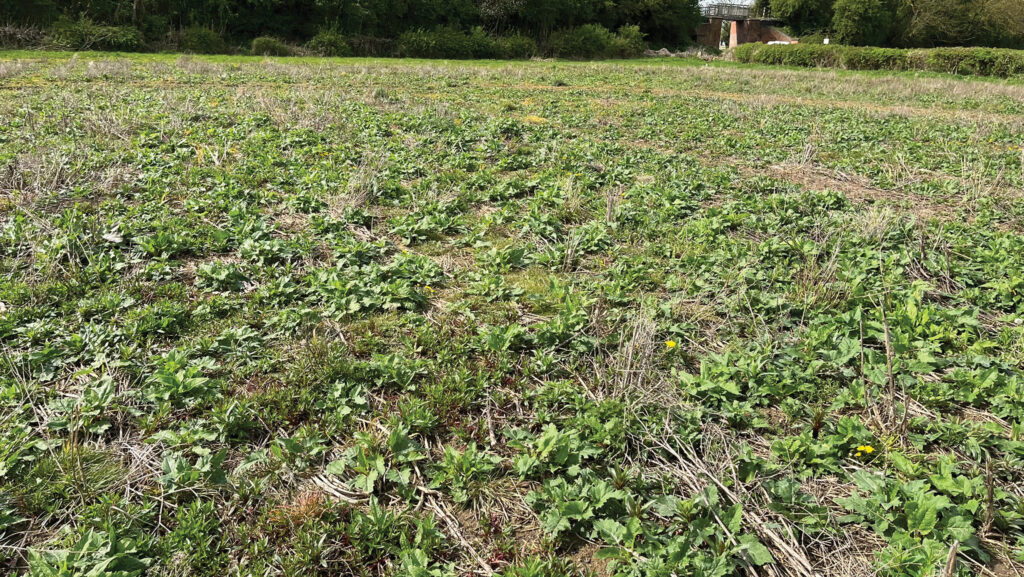
© Paul Sheardown
Physically, it looks much darker than the maize and he plans to analyse its methane potential in the coming weeks, as the first crop begins to be used.
“Work in Germany suggests the methane potential is lower, at about 90% of maize. But with its lower costs, and if we can get near the 80t/ha yields as in Germany, then it would be better than maize.”
Looking to the future, Paul wants to gain more confidence and knowledge with the crop before looking to expand his area. Currently, he has a 70:30 mix by area of maize and silphium.
He believes the crop has the potential to improve the image of maize growing and biogas. “Imagine if it replaced 10% of the maize area with all the environmental benefits of flowers in the summer months.”
That’s why Paul believes it should be part of the Sustainable Farming Incentive, as it ticks many boxes in encouraging less soil disturbance, sequestering carbon, increased earthworm diversity, better soil structure and provides food and habitat for wildlife and reduces inputs such as pesticides.
“It would be good to see it supported – encourage other growers to take a chance and grow it, helping to cover some of the upfront costs,” Paul concludes.
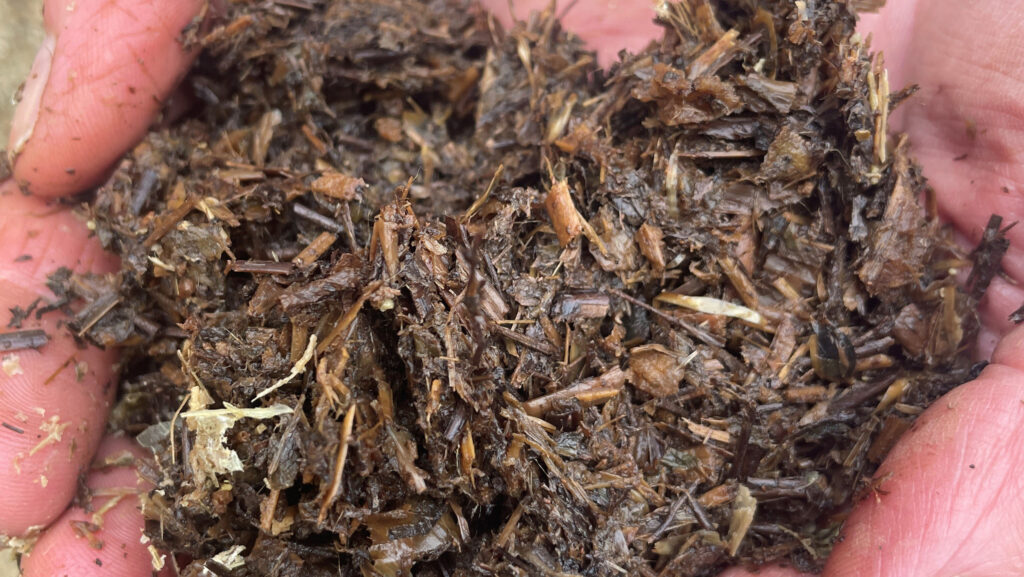
Silphium silage © MAG/Richard Allison
Germany
Farmer Ralf Brodmann is viewed as the godfather of silphium and heads up a consortium of farmers growing 500ha of the crop for a local biogas plant.
He is one of the partners of Metzler & Brodmann in a small town close to Lake Constance in the south of Germany.
Their UK agent for the seed is New Concept and last summer, business partner Fiona Beale (@thesilphiumlady) visited different established sites growing the crop in Germany.
Fiona and her team have amassed extensive knowledge on how to grow it. She says one crop she visited was 23 years old and still going strong.
New Concept are looking to add value to the fibre contained in the digestate. This by-product is passed through a screw press to remove liquid, and the fibre is currently being used by a German company to make paper fibres and food packaging for fruit and vegetables.
For more information please email fiona@07796157117.co.uk.

